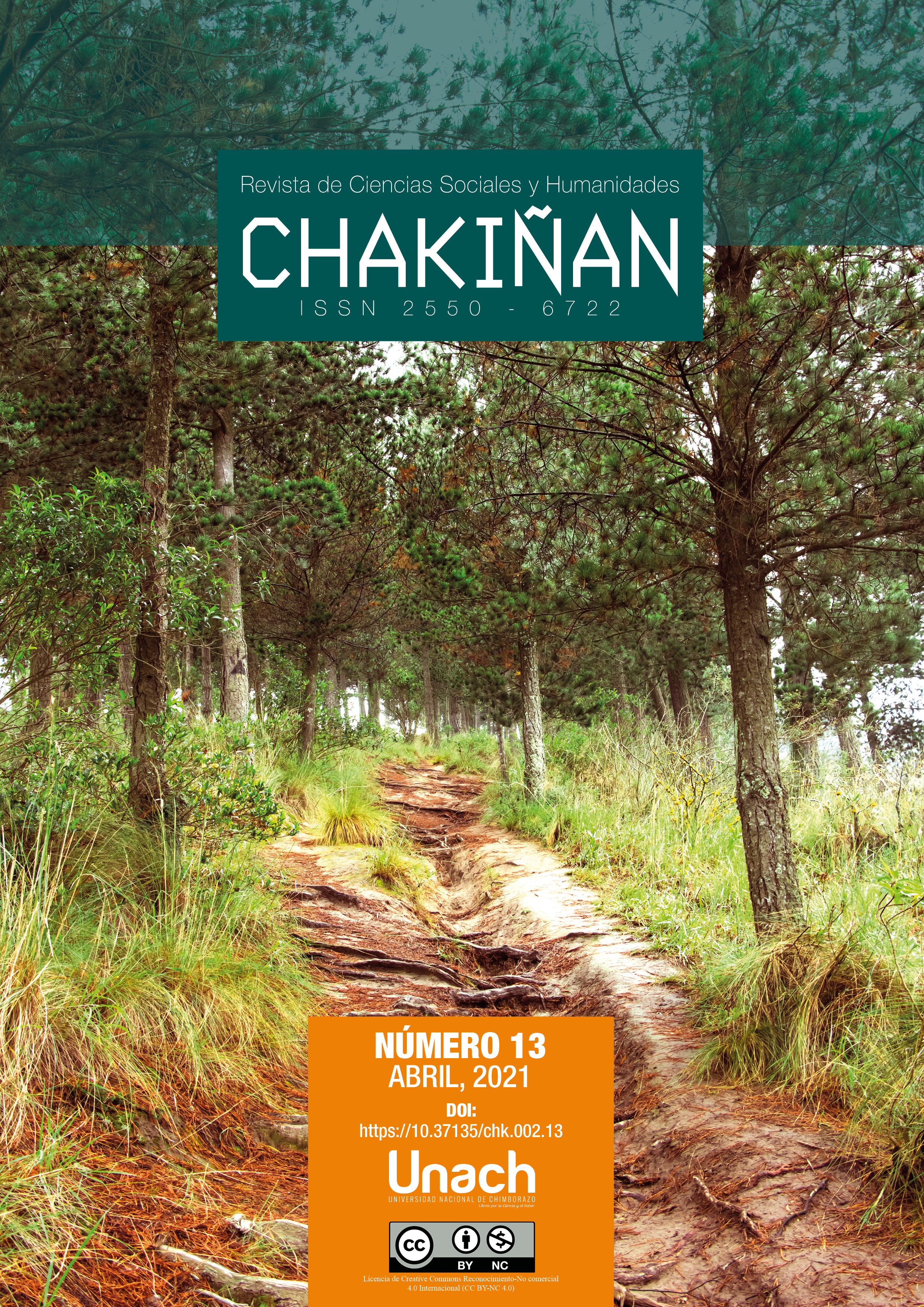JOURNALISTIC GUILD TYPOLOGY OF BAJA CALIFORNIA: APPROACH FROM MEMBERS PERCEPTIONS
Main Article Content
Abstract
The objective of this article is to generate a typology of the journalistic guild in Baja California, Mexico in order to present as a subjective mediation in the development of journalists´ professional practice. Thirty-seven in-depth interviews were implemented to journalists from the state of Baja California and a free association technique was applied using the pile sorting analysis. Three types of journalists were found: the critical journalist, the government-society liaison journalist, and the indifferent journalist. This article concludes that the proposed typology is dynamic, which means, there is a simultaneity of types of journalists, that journalists adopt within the guild. This situation generates spontaneous journalistic practices that change according to ideas and feelings that appear in specific circumstances.
Downloads
Article Details
Conference Proceedings Volume
Section

This work is licensed under a Creative Commons Attribution-NonCommercial 4.0 International License.
Responsibility of the authors:
The authors are responsible for the ideas and data collected in the manuscripts. They are additionally accountable for the fidelity of the information, the correction of the citations, the right to publish any material included in the text, and the presentation of the manuscript in the format required by the Journal (WORD template). A manuscript forwarded to CHAKIÑAN must not have been published before, nor must it have been submitted to another means of publication.
Copyright:
Published articles do not necessarily compromise the viewpoint of the CHAKIÑAN JOURNAL. The Journal is aligned to the policy of the licence de Creative Commons Reconocimiento-No comercial 4.0 Internacional (CC BY-NC 4.0). Each author retains the right to the paper published in the Chakiñan journal.
Privacy statement
The personal data and email addresses entered in this magazine will be used exclusively for the purposes stated by the publication and will not be available for any other purpose or person.
How to Cite
Share
References
Abric, J.C. (2001). Prácticas sociales y representaciones. Ciudad de México, México: Ediciones Coyoacán.
Borrat, H. (1989). El periódico, actor del sistema político. Anàlisi, 12, 67-80. Recuperado de https://ddd.uab.cat/pub/analisi/02112175n12/02112175n12p67.pdf
Casero, A. (2008). Modelos de relación entre periodistas y políticos: La perspectiva de la negociación constante. Estudios sobre el Mensaje Periodístico, 14, 111-128. Recuperado de https://revistas.ucm.es/index.php/ESMP/article/view/ESMP0808110111A/11830
Cohen, B. (1963). The Press and Foreign Policy. Princeton, Estados Unidos: Princeton University Press.
Durkheim, E. (2006). Sociología y Filosofía. Granada, España: Editorial Comares.
Giddens, A. (2003) La construcción de la sociedad: Bases para la teoría de la estructuración. Buenos Aires, Argentina: Amorrortu.
Gieber, W. (1968). News is what newspapermen make it. In Dexter, L. Dexter & D. White (coords.) People, society and mass communication (pp. 173-182). New York: The Free Press.
Giménez, G. (1997). Materiales para una teoría de las identidades sociales. Frontera Norte, 9(18), 9-28. Recuperado de https://fronteranorte.colef.mx/index.php/fronteranorte/article/viewFile/1441/891
Hallin, D.C. & Mancini, P. (2004). Comparing Media Systems. Three Models of Media and Politics. Nueva York, Estados Unidos: Cambridge University Press.
Humanes, M. L. (2003). Evolución de roles y actitudes. Cultura y modelos profesionales del periodismo. Telos, (54), 2-11. Recuperado de https://telos.fundaciontelefonica.com/archivo/numero054/cultura-y-modelos-profesionales-del-periodismo/?output=pdf
Jodelet, D. (2018). Ciencias sociales y representaciones: Estudio de los fenómenos representativos y de los procesos sociales. Delo local a lo global. Relmecs, 8(2), e041. doi https://doi.org/10.24215/18537863e041
Johnstone, J., Slawski, E. & Bowman, W. (1976). The professional values of American newsmen. Public Opinion Quarterly, 36(4), 522-540. Recuperado de https://sci-hub.tw/https://academic.oup.com/poq/article-abstract/36/4/522/1862457?redirectedFrom=PDF
De León, S., Bravo, P. y Duarte, M. (2018). Entre abrazos y golpes…Estrategias subpolíticas de periodistas mexicanos en riesgo. Sur le journalisme, About journalism, Sobre jornalismo, 7(1), 114-129. Recuperado de https://www.researchgate.net/publication/326655362_Entre_abrazos_y_golpes_Estrategias_subpoliticas_de_periodistas_mexicanos_frente_al_riesgo
López, O. y López, G. (2017). Redes de periodistas para vencer el miedo: comunidades emocionales ante la violencia de Estado. Revista de Estudios Sociales, (62), 54-66. doi: https://dx.doi.org/10.7440/res62.2017.06
Márquez, M. (2012). Valores normativos y prácticas de reporteo en tensión: percepciones profesionales de periodistas en México. Cuadernos de información, (30), 97-110. Recuperado de http://www.cuadernos.info/index.php/CDI/article/view/430
Márquez-Ramírez, M. y Hughes, S. (2017). Panorama de los perfiles demográficos, laborales y profesionales de los periodistas en México: Reporte de Investigación. Global Media Journal, 14(26), 91-152. Recuperado de https://www.redalyc.org/articulo.oa?id=68750917005
Martínez, J. (2006). Teorías de la comunicación. Ciudad Guayana, Venezuela: Universidad Católica Andrés Bello.
McQuail, D. (1994). Mass communication theory: An introduction. Londres, Inglaterra: Sage.
Mellado, C. (2014). Professional roles in news content. Journalism Studies, 16(4), 1-19. doi: 10.1080/1461670X.2014.922276
Mellado, C., Márquez, R., Mick, J., Oller Alonso, M. & Olivera, D. (2017). Journalistic performance in Latin America: A comparative study of professional roles in news content. Sage,18(9),1087-1106. doi: 10.1177/1464884916657509
Merchant, D.D. (2017). Una negociación sutil: Relaciones de cortesía entre actores del campo periodístico de Baja California (Tesis de doctorado inédita), Centro de Investigaciones y Estudios Superiores en Antropología Social CIESAS, Guadalajara, México.
Moreira, S. & Oller Alonso, M. (2018). Journalist in newsrooms: Professional roles, influences, and changes to journalism. Brazilian Journalism Research, 14(2), 304-317. Recuperado de https://www.researchgate.net/publication/327322300_Journalists_in_Newsrooms_Professional_Roles_Influences_and_Changes_to_Journalism
Moscovici, S. (1979). El psicoanálisis, su imagen y su público. Buenos Aires, Argentina: Huemul.
Munive, M. (2016). Periodismo de declaraciones. Cuando la prensa renuncia a ser el lugar de los hechos.
Conexión, (6), 42-57. Recuperado de http://revistas.pucp.edu.pe/index.php/conexion/article/view/16456
Rodríguez, T. (2007). Sobre el estudio cualitativo de la estructura de las representaciones sociales. En M. García. & T. Rodríguez (coords.). Representaciones sociales. Teoría e investigación (pp.158-188). Ciudad de México, México: Universidad de Guadalajara.
Siebert, F. S., Peterson, T. & Schramm, W. (1956). Four Theories of the press. Urbana, Estados Unidos: University of Illinois Press.
Sigal, L. (1978). Reporteros y funcionarios. La organización de las normas de la elaboración de noticias. Ciudad de México, México: Gernika.
Urbina, J. E. y Ovalles, G. A. (2018). Teoría de las representaciones sociales. Una aproximación al estado del arte en América Latina. Psicogente, 21(40), 495-517. doi: 10.17081/psico.21.40.3088.
Weaver, D. & Wilhoit, G. (1991). The American journalist. A portrait of U.S. news people and their work. Bloomington, Estados Unidos: Indiana University Press.






